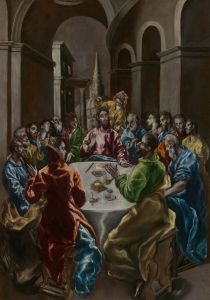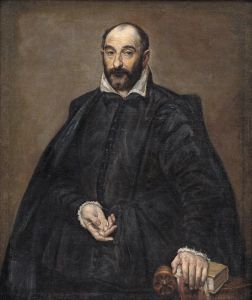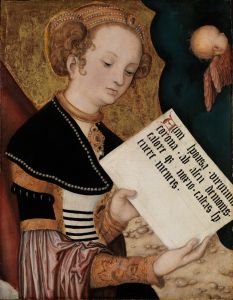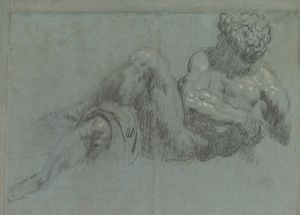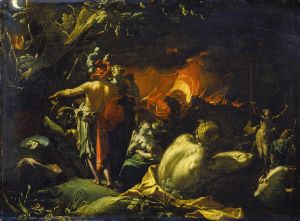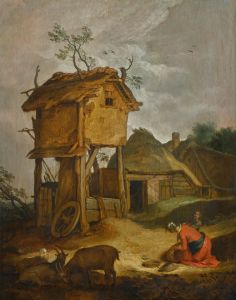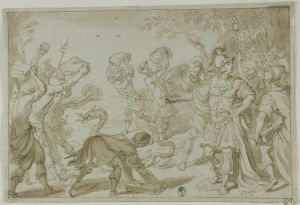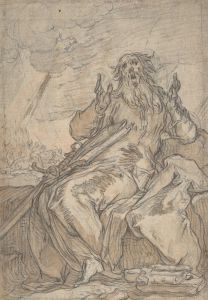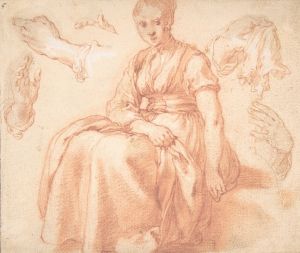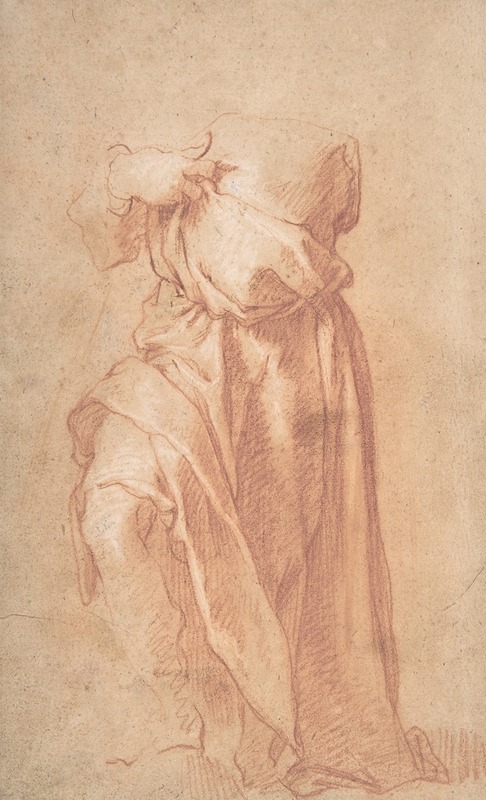
Study of a Headless Draped Figure with Arms Crossed
A hand-painted replica of Abraham Bloemaert’s masterpiece Study of a Headless Draped Figure with Arms Crossed, meticulously crafted by professional artists to capture the true essence of the original. Each piece is created with museum-quality canvas and rare mineral pigments, carefully painted by experienced artists with delicate brushstrokes and rich, layered colors to perfectly recreate the texture of the original artwork. Unlike machine-printed reproductions, this hand-painted version brings the painting to life, infused with the artist’s emotions and skill in every stroke. Whether for personal collection or home decoration, it instantly elevates the artistic atmosphere of any space.
Abraham Bloemaert, a prominent Dutch painter and printmaker, is known for his significant contributions to the art of the Dutch Golden Age. One of his intriguing works is the "Study of a Headless Draped Figure with Arms Crossed." This artwork exemplifies Bloemaert's mastery in drawing and his ability to convey complex forms and textures through simple yet effective techniques.
Bloemaert was born in 1566 in Gorinchem, the Netherlands, and was a pivotal figure in the Utrecht School of painting. His career spanned a period of great change in Dutch art, and he was instrumental in the transition from Mannerism to a more naturalistic style. Bloemaert's work is characterized by its dynamic compositions, attention to detail, and the use of light and shadow to create depth and volume.
The "Study of a Headless Draped Figure with Arms Crossed" is a testament to Bloemaert's skill in capturing the human form. Although the figure is headless, the drawing focuses on the drapery and the positioning of the arms, which are crossed over the chest. This study likely served as a preparatory work for a larger composition, as was common practice among artists of the time. Such studies allowed artists to experiment with poses, drapery, and anatomy before committing to a final piece.
Bloemaert's use of drapery in this study is particularly noteworthy. The folds of the fabric are rendered with precision, showcasing his understanding of how cloth interacts with the human body and how it can be used to convey movement and emotion. The absence of a head in the study directs the viewer's attention to the intricate details of the drapery and the expressive potential of the human form, even when incomplete.
Throughout his career, Bloemaert was known for his versatility and adaptability. He worked in various media, including oil painting, drawing, and printmaking, and his subjects ranged from religious and mythological scenes to landscapes and genre scenes. His ability to blend different styles and techniques made him a highly influential figure in Dutch art.
Bloemaert's influence extended beyond his own work; he was also a respected teacher. Among his pupils were notable artists such as Gerard van Honthorst, Hendrick ter Brugghen, and Jan Both, who carried forward his teachings and contributed to the spread of the Utrecht Caravaggisti style. This style was characterized by dramatic lighting and realistic depictions of figures, inspired by the works of Caravaggio.
The "Study of a Headless Draped Figure with Arms Crossed" reflects Bloemaert's commitment to exploring the human form and his dedication to the craft of drawing. While the study itself may not be as widely recognized as some of his finished paintings, it provides valuable insight into his artistic process and the techniques he employed to achieve his renowned compositions.
In conclusion, Abraham Bloemaert's "Study of a Headless Draped Figure with Arms Crossed" is a fine example of his skill as a draftsman and his ability to convey complex forms through simple studies. It highlights his contribution to the development of Dutch art and his role as a mentor to the next generation of artists. Through works like this, Bloemaert's legacy continues to be appreciated by art historians and enthusiasts alike.





